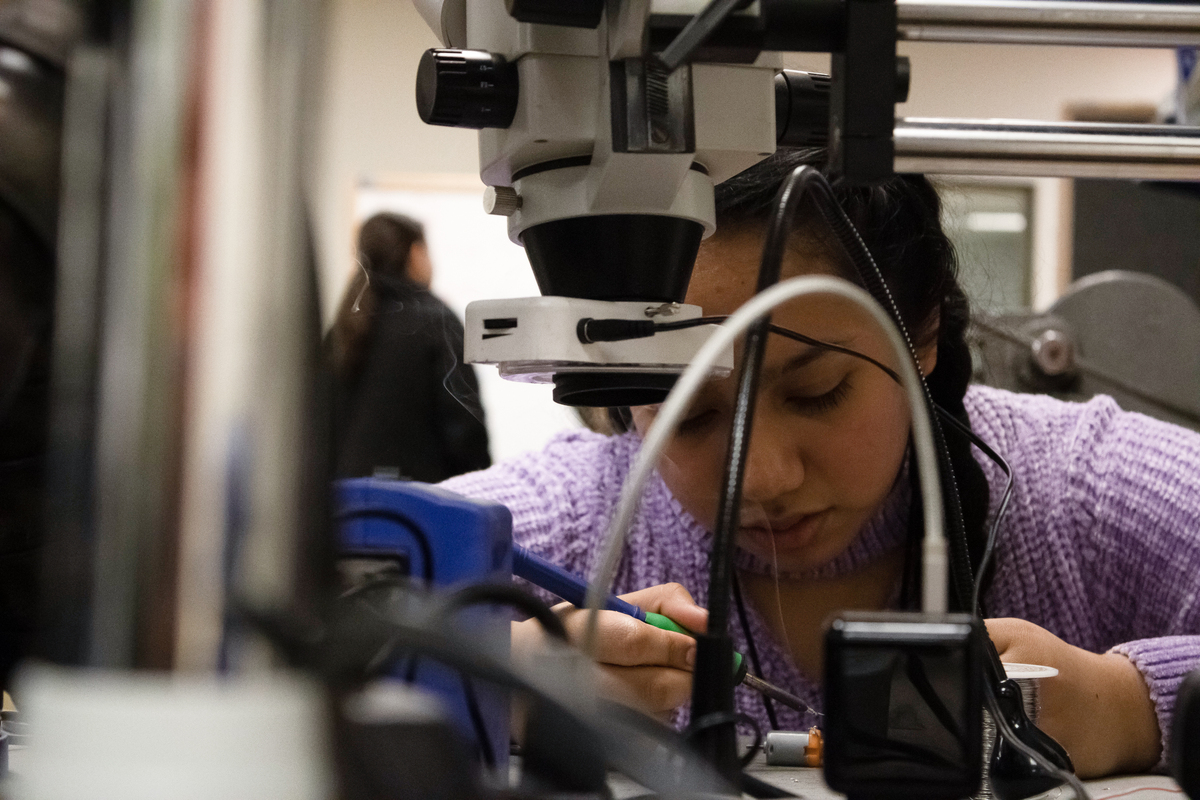Portland State Science, Technology, Engineering and Mathematics students tried on brainwave-reading headsets—or Brain-Computer Interface devices—for a usability study last week at the Intel Jones Farm campus in Hillsboro, Ore. Researchers wanted to find out if the futuristic headsets could be practically worn on a daily basis.
The study, conducted from Jan. 27–Feb. 4, tested futuristic-looking headsets on a group of female participants in the 18–30 age range. Participants tested three BCI devices and flew a simulated drone, then shared their experiences at the end of each session.
“Apart from the traditional uses of BCI devices,” said Intel researcher France Jackson, “we are aiming for using [the device] with every style and everywhere.”
Primarily patients with locked-in syndrome, a medical condition where body muscles are paralyzed but individuals are fully aware, have tested BCI’s to see if the device can read and translate their thoughts.
Oregon Health and Sciences University researcher Andrew Fowler won the 2014 Three-Minute Thesis challenge at PSU for his student research that demonstrated BCI’s ability, combined with artificial intelligence, to type patients’ thoughts onto a computer screen.
OHSU professor Dr. Melanie Fried-Oken and a team of researchers are pioneers in developing BCI assistive technology. The team includes Betts Peters, who took an ice bucket challenge for BCI research fundraising in 2014. In a video, Peters explains the scope of BCI technology for patients with locked-in syndrome and describes how physicist Stephen Hawking uses the device to communicate.
However, under Fried-Oken’s leadership, OHSU researchers hope to develop BCIs for everyday use in the future.
The team of computer engineers, clinical physiologists and Natural Language Processing analysts collect feedback from study participants to find ways BCIs might benefit people in everyday scenarios.
For instance, BCI devices can be used to alert long-haul truck drivers if they start falling asleep. According to the Centers for Disease Control and Prevention, approximately one in 25 drivers fall asleep at the wheel. A 2013 study blames drowsy driving for 72,000 vehicle crashes, 44,000 on-road injuries and 800 deaths in the United States alone.
Jackson suggests using BCIs to check attention spans in the classroom, as many universities make online replays of lectures available to students. Students—and possibly lecturers—can check their attention depth and span at the end of the class, then students can listen to a replay if needed.
PSU graduate student Aayushi said, “I like the idea of using it in assessing my classroom performance and how my brain reacts to different situations.”
The myriad uses of BCI are motivating researchers and wearable medical device manufacturers globally. The market grew at a rate of 14.9% annually from 2016 to 2024, with spending in the U.S. alone at $383.2 million in 2015.
The public can purchase some BCIs for classroom use and personal meditation, but they are not particularly attractive or useful in public spaces. Jackson added, “It poses an additional challenge to design it for the comfortable wear for our target audiences.”






